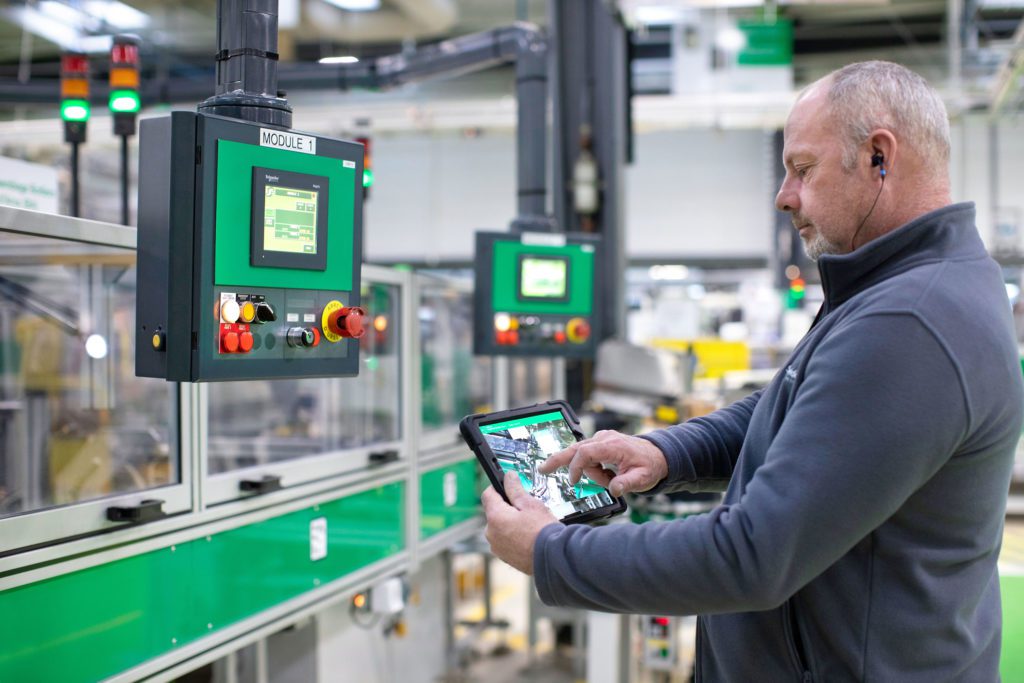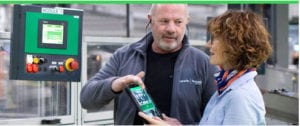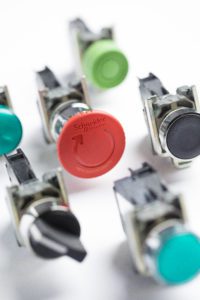 According to the ARC Advisory Group, multiple global digitization trends ̶ the Industrial Internet of Things, the connection of more mobile devices, multi-touch technology, cloud computing, and Big Data analytics ̶ are propelling market growth. However, if machine builders hope to share in this growth opportunity, an evolution in operator interface design will be required to provide a window for achieving the productivity benefits of smart machines. Design changes will include the incorporation of dashboards that reflect inputs from multiple external data streams and that present data analysis outputs. OEM machine interface design focus will require a shift from a machine-centric to a more operator-centric point of view.
According to the ARC Advisory Group, multiple global digitization trends ̶ the Industrial Internet of Things, the connection of more mobile devices, multi-touch technology, cloud computing, and Big Data analytics ̶ are propelling market growth. However, if machine builders hope to share in this growth opportunity, an evolution in operator interface design will be required to provide a window for achieving the productivity benefits of smart machines. Design changes will include the incorporation of dashboards that reflect inputs from multiple external data streams and that present data analysis outputs. OEM machine interface design focus will require a shift from a machine-centric to a more operator-centric point of view.
Machine function no longer consists only of component control but should also encompass the monitoring and analysis of production and performance data. In this way, when operators and machines are interacting, adjustments to machine operations can be made more precise and efficient.
Breakthroughs in cobots and mobile cobots, 5G networks, indoor geo-localization, cloud and edge computing, augmented reality, artificial intelligence and machine learning are forcing a re-evaluation of the best methods for designing the new generation of machine interfaces. These new technologies will impact the entire range of digitized interfaces.
Changing end user business requirements are driving operator interface innovation
Moving forward, manufacturing sites will require that machine operators embrace a broader scope of responsibilities. Fulfilling those tasks will depend on visibility to multiple machines that influence a particular function or process. As older employees retire and are replaced by less experienced millennials, operator interface simplification will be required to increase operator efficiency while reducing the time needed to execute specific tasks. The increased efficiency will be made possible through enhanced device flexibility. The best way to attain that flexibility is to design operator interfaces that are highly customizable.
As interface devices become more connected and more mobile (consider the new wave of wearable, interactive devices on the consumer front), security and safety will also become a greater concern. New levels of protection from both physical and cyber threats need to be accounted for in the design of more modern operator interfaces.
Modern solutions incorporate connectivity and ease of use
Schneider Electric helps OEM Marketing Directors and Technical Design Leaders to successfully navigate these new challenges in several ways. Schneider Electric Harmony operator interfaces, for example, enhance operational efficiency and machine availability. Harmony solutions can range from a simple set of pushbutton or single-touch displays mounted on a machine to more advanced technologies such as multi-touch control panels, to advanced industrial PC supervisory control and data acquisition, and even to connected mobile technologies such as tablets and smartphones.
By incorporating Harmony devices into their machines, OEMs benefit in multiple ways:
- Increased business value through connectivity – Machines are delivered with more functionality and innovative interface designs help users to realize more value from their machines (like connection to outside data from other process that drive better decision-making).
- Customized aesthetic – Unique look and feel enables not only more end user comfort and convenience but also increased simplicity and safety.
- Higher efficiency performance – Intuitive machine interface designs help to reduce human operator error thereby driving higher productivity from operations staff.
- Full mobility capability – Process data can now be viewable from mobile devices with tools that integrate data, documentation and graphics that allow for intuitive operation.
- Environmental adaptability – Further differentiation is provided by HMI technologies that are more capable of operating under extended temperature ranges and that are resistant to moisture, shock, vibration and harsh chemicals.
Flexible approaches for multiple machine scenarios help in configurating the right solution
While recognizing trends and injecting innovation into the machine operator interfaces are great first steps, it is important to establish a method for properly sizing opportunities and for building machine interface solutions around core marketplace scenarios. The newly published Schneider Electric e-guide for machine builders “Design Considerations for Optimizing Operator Interface Usability based on Machine Function, Size and Complexity”, takes a closer look in the latest trends and highlights the most common machine operator interface scenarios for configuring the right solution. The guide illustrates the three principal scenarios, making it easier for OEMs to quickly achieve the best usability and effective and optimized operator interfaces based on machine size and complexity.
To more easily design and configure a differentiated and optimum machine operator interface, download our free e-guide here.
 Designing Smart Machine Operator Interfaces
Designing Smart Machine Operator Interfaces
To know more about this topic, we recommend you to read the following articles:



